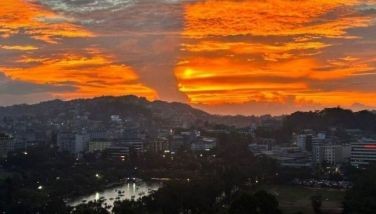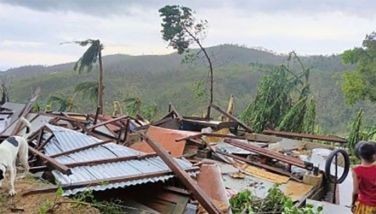Bulldozers get to work in quake-ravaged Peruvian town
PISCO, Peru (AFP) - Bulldozers moved in yesterday to tear down the ruins of shattered buildings in this quake-hit Peruvian town, starting with the main church, which has come to symbolize the country's tragedy.
Operations also began to fumigate whole sectors of the town to head off diseases before they turn into possible epidemics.
More than 1,000 police and soldiers have also been deployed to halt the looting that has sown fear among the battered population.
According to the latest count by the Civil Defense service, 540 people died across the whole quake-hit region of southern Peru, 1,039 were injured, and more than 176,000 people were left homeless.
A total of 35,000 homes were destroyed in the magnitude 8.0 temblor (7.7 on the Richter scale) that heaved across southern Peru on Wednesday, most of them in Pisco, which was 70 percent destroyed.
Five days after the catastrophe rescue operations were wound up to the frustration of some rescue workers who believed there could still be more survivors.
Firefighter Javier Vallero, who has the uneviable record of having found the most corpses beneath the rubble, talked emotionally of walking "hand in hand with death."
"You feel so powerless when you don't get there in time. I have found lots of bodies, I don't know how many because I find it too hard to count them.
"I've found people cut in two by a wall which has fallen on them," said the 25-year-old Peruvian.
The town's San Clemente church has been the focus for the grieving. The roof had collapsed in the quake, killing 160 people -- nearly half of the town's 335 identified dead.
Yesterday, only the bell towers and part of the broken dome were still standing as heavy machinery knocked down the facade, deemed in danger of falling.
The risk of collapse of the few buildings left standing in Pisco was real and widespread. "Just about all of them are dangerous," a chief firefighter, Jose Varallanos, said.
An engineer with the Civil Defense service, Julio Siesquen Lozada, walked along inspecting some of the streets. "The reality is, all the town will be planned, remodelled," he said, adding the reconstruction work would take years.
The mostly poor families whose rudimentary adobe homes had come crashing down would be relocated to temporary lodgings being prepared while the clearing effort already underway intensified.
But, Siesquen said, most would never be able to return -- the 6,000 soles (2,000 dollars, 1,700 euros) housing aid promised by the government would only buy a lodging too tiny for large families and many people would be forced to sell.
"This town will never go back to what it was," he said.
Still, families camping out in the open near their broken homes were reluctant to leave.
"This is my home, we want to rebuild it," Gisela Cajo Torrelba, 34, standing by a pile of dust and stones that used to house her and her three children.
Elsewhere in Pisco, fumigators pumped insecticidal smoke into the rubble, under which an estimated 150 bodies were lying in advanced states of decomposition.
"We are trying to prevent epidemics that could take hold after this disaster," said a spokeswoman with a team from Lima, Jouana Janampa.
- Latest
- Trending





























